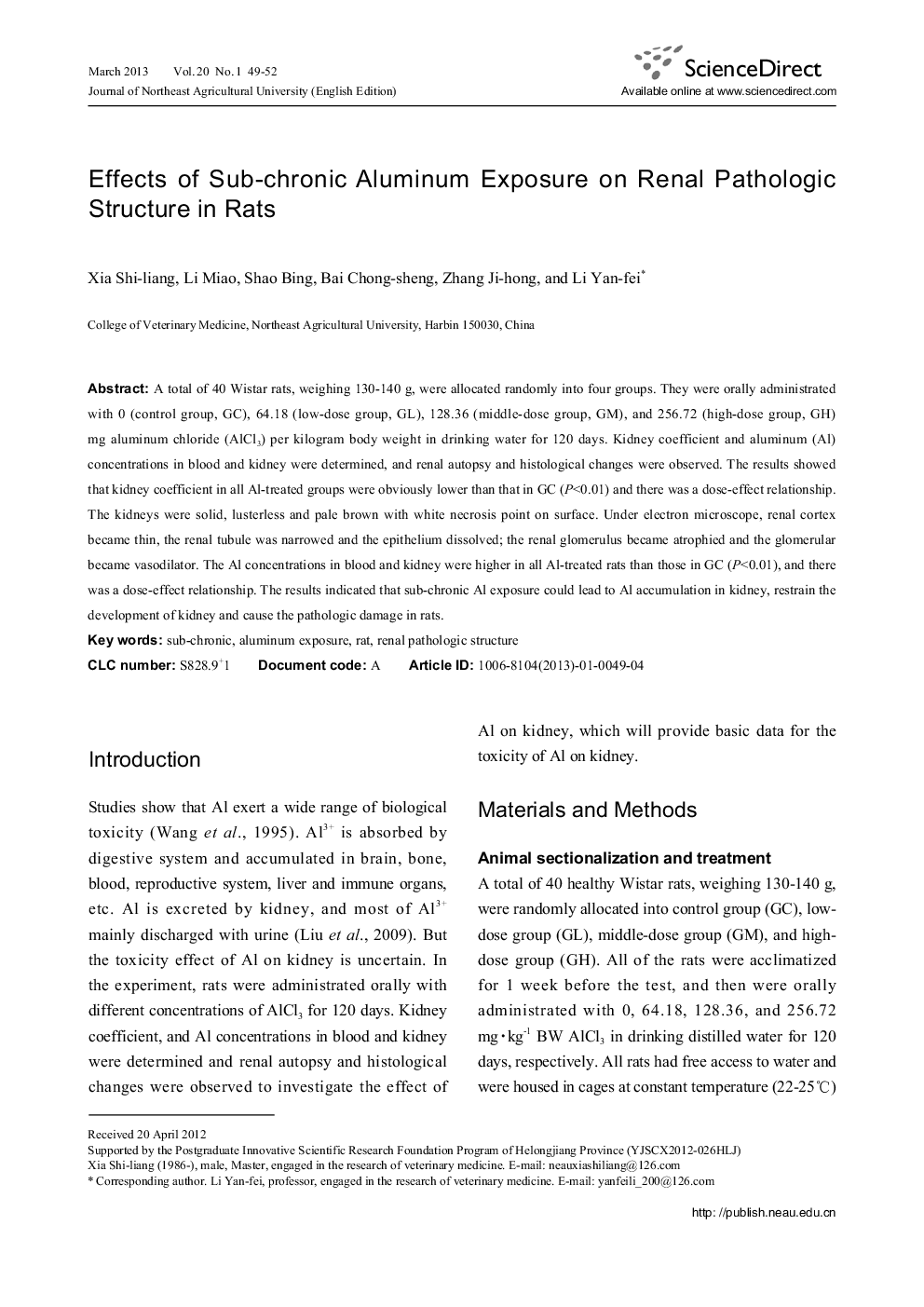| Article ID | Journal | Published Year | Pages | File Type |
|---|---|---|---|---|
| 4495494 | Journal of Northeast Agricultural University (English Edition) | 2013 | 4 Pages |
A total of 40 Wistar rats, weighing 130-140 g, were allocated randomly into four groups. They were orally administrated with 0 (control group, GC), 64.18 (low-dose group, GL), 128.36 (middle-dose group, GM), and 256.72 (high-dose group, GH) mg aluminum chloride (AlCl3) per kilogram body weight in drinking water for 120 days. Kidney coefficient and aluminum (Al) concentrations in blood and kidney were determined, and renal autopsy and histological changes were observed. The results showed that kidney coefficient in all Al-treated groups were obviously lower than that in GC (P<0.01) and there was a dose-effect relationship. The kidneys were solid, lusterless and pale brown with white necrosis point on surface. Under electron microscope, renal cortex became thin, the renal tubule was narrowed and the epithelium dissolved; the renal glomerulus became atrophied and the glomerular became vasodilator. The Al concentrations in blood and kidney were higher in all Al-treated rats than those in GC (P<0.01), and there was a dose-effect relationship. The results indicated that sub-chronic Al exposure could lead to Al accumulation in kidney, restrain the development of kidney and cause the pathologic damage in rats.
